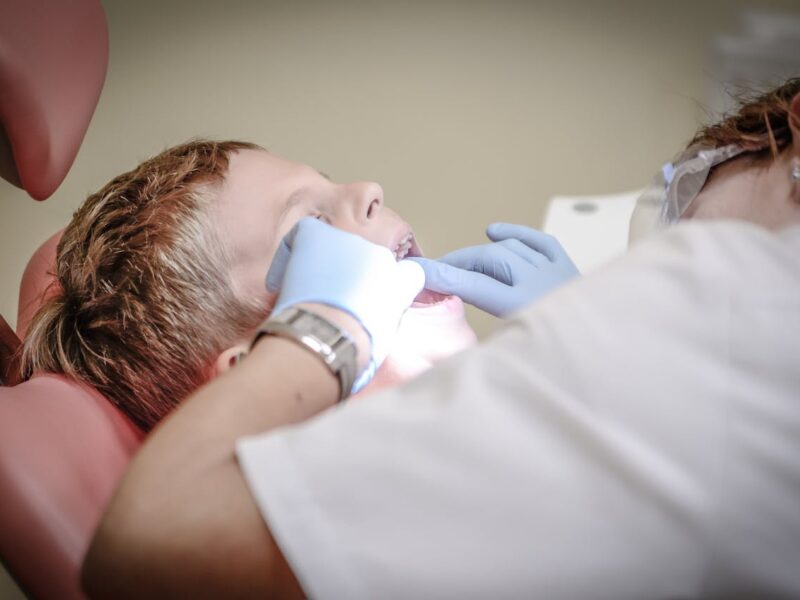Do you know the signs you have a cavity? Noticing any changes in your smile or pain when eating is a good starting point.
If you have a cavity, you need to get it fixed before it spreads. When getting a cavity filled, there are a few things you’ll want to know. From the process to tooth sensitivity after the filling, we are sharing everything you need to know.
Read on to learn more about getting a cavity filled.
Contents
The Initial Examination
The initial examination is important when getting a cavity filled. The dentist will check for any decay or damage to the tooth and will also take x-rays to determine the best way to fill the cavity.
If the cavity is small, the dentist may just need to clean it out and fill it with a composite filling. If filling a cavity is large, the dentist may need to put in a crown or cap.
The initial examination is important to ensure that the cavity is filled properly and to prevent further damage to the tooth.
The Dental Filling Procedure
When you have a cavity, your dentist will need to remove the decay and then fill the hole that is left. The type of filling that is used will depend on the size and location of the cavity. If the cavity is small and on the surface of the tooth, a resin filling may be used.
To start the procedure, the dentist will numb your tooth and the surrounding gums with a local anesthetic. They will remove the decay from your tooth using a drill.
Once the decay is removed, the dentist will fill the cavity with tooth-colored composite resin, which is a type of plastic. Finally, the dentist will use a laser to harden the resin and then polish the filling.
This is a tooth-colored filling that is made from a composite material. If the cavity is larger, or if it is on the root of the tooth, an amalgam filling may be used. This is a silver-colored filling that is made from a mixture of metals.
The tooth will be numbed with local anesthesia before the filling is placed.
Local Anesthetic
Local anesthesia numbs a specific area. It’s used when you have a minor procedure, such as getting a cavity filled. The anesthesia is usually given as a shot.
Once it’s injected, you shouldn’t feel any pain in the area where the shot was given. Local anesthesia usually wears off in a couple of hours. Your dentist may also use a numbing gel or spray on your gums to help make the process more comfortable.
You may feel a little pressure when the needle is first injected, but the anesthesia should take effect within a minute or two. Once the area is numb, you shouldn’t feel any pain during the procedure.
Preparing the Damaged Tooth
Once the dentist has determined that tooth decay has occurred, they will need to prep the damaged tooth before filling the cavity. This involves removing the decay and any surrounding tooth structure that is damaged.
Cavity filling is used to restore teeth that have been damaged by decay. In order to prepare the damaged tooth for a filling, the dentist will first remove the decayed tissue.
The tooth will then be cleaned and shaped so that the filling can be properly placed. In some cases, a bonding material may be used to help secure the filling. After the decayed area is removed, the dentist will smooth out the tooth to prepare it for the filling.
Applying the Filling
When getting a cavity filled, the dentist will first clean out the decayed tooth material. Once the area is clean, they will then apply the filling. The filling will help to restore the tooth and make it strong again.
The process of getting a cavity filled is relatively simple. After the dentist has prepared the tooth, they will apply the filling. The filling will then be left to harden. Once it has hardened, the dentist will trim and polish the filling.
The Finishing Touches
After getting a cavity filled, the finishing touches are important in order to ensure that the cavity is properly sealed and protected. This includes using fluoride toothpaste to help strengthen the tooth, as well as using a mouth rinse to help reduce the risk of future cavities.
Additionally, it is important to avoid sugary foods and drinks, as well as tobacco products, as these can lead to further tooth decay. With proper care, your cavity should be filled and your smile will be back to normal in no time!
Sore Teeth After Filling
When getting a cavity filled, it is not uncommon to have sore teeth afterward. This is usually due to the numbing medication wearing off and the teeth being sensitive to the filling material.
There are a few things that can be done to help alleviate the discomfort. Trying over-the-counter pain medication, using a cold compress, or avoiding hot and cold drinks can all help.
If the soreness persists, make an appointment with a professional like a Dentist in Ontario to see if the filling needs to be adjusted.
Learn More About Getting a Cavity Filled
A cavity filling is a common dental procedure that can help to restore your tooth to its full function and prevent further decay. The process is usually quick and painless, and you can expect to see results immediately.
If you need in getting a cavity filled, be sure to schedule an appointment with your dentist soon to get it filled.
Did you find this article helpful? If so, then be sure to check out the rest of our blog for more!



